United Kingdom nuclear weapons, 2024
By Hans M. Kristensen, Matt Korda, Eliana Johns, Mackenzie Knight | November 12, 2024
United Kingdom nuclear weapons, 2024
By Hans M. Kristensen, Matt Korda, Eliana Johns, Mackenzie Knight | November 12, 2024
For decades, the United Kingdom has maintained a stockpile of approximately 225 nuclear warheads—up to 120 of which are available for delivery by four Vanguard-class nuclear-powered ballistic missile submarines. The stockpile is now increasing. The United Kingdom is currently building a new class of Dreadnaught-class submarines and developing a new nuclear warhead. In addition, it is expected that the United Kingdom will eventually increase the size of its arsenal and that Royal Air Force (RAF) Lakenheath will regain a United States Air Force nuclear mission in the coming years. The Nuclear Notebook is researched and written by the staff of the Federation of American Scientists’ Nuclear Information Project: director Hans M. Kristensen, associate director Matt Korda, and senior research associates Eliana Johns and Mackenzie Knight.
This article is freely available in PDF format in the Bulletin of the Atomic Scientists’ digital magazine (published by Taylor & Francis) at this link. To cite this article, please use the following citation, adapted to the appropriate citation style: Hans M. Kristensen, Matt Korda, Eliana Johns, and Mackenzie Knight, United Kingdom nuclear weapons, 2024, Bulletin of the Atomic Scientists, 80:6, 394-407, DOI: https://doi.org/10.1080/00963402.2024.2420550
To see all previous Nuclear Notebook columns in the Bulletin of the Atomic Scientists dating back to 1987, go to https://thebulletin.org/nuclear-notebook/.
The United Kingdom maintains what it refers to as an “independent, minimum credible deterrent” (UK Ministry of Defence 2022) with a stockpile of approximately 225 nuclear warheads, of which up to 120 are operationally available for deployment on four Vanguard-class nuclear-powered ballistic missile submarines (SSBNs). The stockpile is now increasing. This estimate is based on publicly available information regarding the size of the UK nuclear arsenal, conversations with British officials, and analysis of the country’s nuclear force structure. The SSBNs, each of which has 16 missile tubes, constitute the United Kingdom’s sole nuclear platform, and US-supplied submarine-launched ballistic missiles (SLBMs) comprise its sole nuclear delivery system. The United Kingdom is the only nuclear weapon state that operates a posture with a single deterrence system (Table 1).

Research methodology and confidence
The analyses and estimates made in Nuclear Notebooks are derived from a combination of open sources: (1) state-originating data (e.g. government statements, declassified documents, budgetary information, military parades, and treaty disclosure data); (2) non-state-originating data (e.g. media reports, think tank analyses, and industry publications); and (3) commercial satellite imagery. Because each of these sources provides different and limited information that is subject to varying degrees of uncertainty, we crosscheck each data point by using multiple sources and supplementing them with private conversations with officials whenever possible.
As a liberal democracy with an active civil society and media landscape, it is possible to obtain relatively higher quality information about the United Kingdom’s nuclear arsenal than in many other nuclear-armed countries. The UK government typically releases an annual update to parliament on the status of its nuclear arsenal, which includes information about the past year’s progress, associated costs, and other aspects of the program. The government is also regularly responsive to parliamentary questions by Members of Parliament about the status of the UK nuclear program, although some details get redacted. Civil society organizations that play a watchdog role—including ours—as well as independent media organizations, are also occasionally able to acquire information about the UK nuclear arsenal through freedom of information requests or other forms of investigation, including satellite imagery analysis.
The United Kingdom is unique in that its nuclear program is highly intertwined with that of another nuclear-armed state: the United States. This relationship is formally governed since 1958 by the US-UK Mutual Defence Agreement, which allows for the transfer of nuclear materials, research, training, technology, and more between the two countries (Nuclear Information Service 2024b). The United Kingdom’s warhead designs are closely tied to their US counterparts and, rather than deploying its own missiles, the United Kingdom has title to Trident SLBMs from a pool of missiles shared with the United States Navy. As a result of these close ties, it is possible to obtain information about the UK nuclear program through examination of the history and changes to the US nuclear program. We have also been able to break news about the UK nuclear arsenal by monitoring US budgetary and procurement documents.
The United Kingdom has not publicly disclosed figures for its nuclear stockpile or numbers of deployed warheads and missiles since 2021, following its decision to stop this practice as part of its Integrated Review (British Government 2021). This action by the Johnson government was a mirror image of the Trump administration’s abrupt decision to keep the US nuclear stockpile number secret after nearly a decade of unprecedented transparency under the Obama administration (Kristensen 2020). The Biden administration recently restored US stockpile transparency, a move that the UK government had not followed as of October 2024. As a result, transparency of the UK nuclear posture is decreasing at a time when the UK government has decided to increase the stockpile cap to 260 warheads.
The United Kingdom’s nuclear posture and targeting policies
Since 1969, one of the United Kingdom’s four SSBNs has been deployed at sea at all times in what is called a “continuous at-sea deterrent” (also known as CASD) posture. When one submarine is on patrol, two of the other submarines are in port and can be deployed on short notice, while the fourth is in overhaul and could not be quickly deployed, if at all. The UK government has previously said that the SSBN on patrol carries approximately 40 warheads and operates its missiles in a “de-targeted” mode, meaning that target coordinates are stored in the submarine’s launch control center instead of in the navigational system of each missile and would need to be loaded into the missiles’ guidance systems prior to a launch. Moreover, the “notice to fire” period for UK SSBNs is now within days, rather than within a few minutes as was the case during the Cold War. However, the delay is more for political reasons than technical limitations, and the missiles could be rapidly brought up to full readiness status if needed during a crisis (Hare 2006; Mills 2024a).
The United Kingdom has historically been—and continues to be—relatively opaque regarding its nuclear targeting policies. Its latest policy documents largely echo the country’s Cold War-era line that “We are deliberately ambiguous about precisely when, how, and at what scale we would use our weapons” (HM Government 2024b). However, some information has been made available that allow historians and analysts to draw conclusions about the UK’s targeting policies.
The targeting plans of the United Kingdom and the United States have been integrated for decades, and throughout the Cold War included a mix of civilian and military targets (Baylis 2005). UK defense planners, however, also understood the need for an independent nuclear strategy that would be entirely based on targeting cities. The reason for this emphasis on “countervalue” targeting was largely out of concern that insufficient intelligence and missile accuracy would not allow for a true counterforce doctrine, as well as the fact that the United Kingdom would not be able to afford to purchase the number of delivery systems and launch platforms necessary to execute such a doctrine (Baylis 2005).
To mitigate these concerns, the United Kingdom’s independent targeting doctrine centered around the so-called “Moscow criterion,” which called for a deterrent necessarily capable of destroying the Russian capital, along with other important cities. To be able to execute both its independent targeting doctrine and its integrated targeting mission alongside the United States, during the Cold War, UK submarines carried multiple sets of target tapes, which would be fed into the onboard computers to direct the submarines’ missiles to the appropriate targets. The target tapes for the defense of NATO were developed by the US Joint Strategic Target Planning Staff and fed into the larger European Nuclear Operations Plan, while the target tapes for the United Kingdom’s independent deterrent were produced by the Navy and eventually by the Nuclear Policy Directorate within the UK Ministry of Defence (Gregory 1996, 117).
After the end of the Cold War and the elimination of the United Kingdom’s non-strategic nuclear weapons, the UK government temporarily assigned a “sub-strategic” role to its SSBNs. The sub-strategic mission became operational in 1995 with the commissioning of the second Vanguard-class SSBN (HMS Victorious). The missiles on a submarine earmarked for sub-strategic targets were not the same as those assigned to strategic targets, presumably because the sub-strategic mission only required a missile to carry one or two warheads each. The UK government explained in 1997: “A sub-strategic strike would be an attack of a more restricted kind, perhaps against a specific military target. The difference is one of scale and purpose” (Howe 1996).
“This is not a system that is geared or operated to achieve military objectives, by which I mean taking out a town, city, territory or whatever,” a former SSBN commander told the UK Select Committee on Defence in 2006. “What it means is that it offers the government of the day an extra option in the escalatory process before it goes for an all-out strategic strike which would deliver unacceptable damage to a potential adversary. It gives it a lower level of strike with which to demonstrate will, intent or whatever. It does not have to be used at all but it gives the government of the day that extra option at the sub-strategic level,” the commander explained. So, “when each submarine goes to sea it has the capacity to fulfil the complete spectrum of capability, strategic and sub-strategic.” (Hare 2006)
The missiles assigned the sub-strategic mission were thought to be equipped with a modified warhead with a yield of roughly 10 kilotons, whereas the warheads on the remaining missiles were the original version with a full yield of approximately 100 kilotons. But the public perception of a “tactical” Trident mission with a lower threshold—including against non-nuclear targets—was controversial and eventually caused the UK government to stop using the term. Since then it has remained unclear if the lower-yield, sub-strategic mission is still part of the UK posture, but a UK defense official informed us in 2021 that the low-yield capability was not operational (Kristensen and Korda 2021).
Today, although the United Kingdom claims to “not target [its] missiles at any state” (HM Government 2024b), it is likely that the “Moscow criterion” remains the dominant principle of its nuclear targeting policy, which likely seeks to field a nuclear force capable of holding adversaries’ major cities at risk. In addition, both US and UK nuclear targeting plans reportedly remain integrated (Ritchie 2024, 25–26): The United States shares strategic nuclear targeting information with the United Kingdom for the entire Russian territory, an arrangement most recently updated in December 2021 (Kristensen 2008a; US Joint Chiefs of Staff 2024, 6).
While Russia is singled out as “the most acute direct threat to the United Kingdom,” the Integrated Review also included what appears to be a subtle—but clear—nuclear threat against Iran, even though the country does not have nuclear weapons: After assuring that “the United Kingdom will not use, or threaten to use, nuclear weapons against any non-nuclear weapon state party to the Treaty on the Non-Proliferation of Nuclear Weapons 1968 (NPT),” the document states that “[t]his assurance does not apply to any state in material breach of those non-proliferation obligations” (HM Government 2021, 77).
The United Kingdom’s nuclear policy is determined by the Prime Minister under guidance of the Chief of the Defence Staff and National Security Council. The policy is run through the Defence Nuclear Organisation within the Ministry of Defence, which is responsible not only for the UK nuclear submarine and warhead programs but also for the country’s nuclear-related partnerships with the United States, France, and Australia (Ritchie 2024, 30).
The United Kingdom has declared its nuclear weapons to the defense of NATO since 1962 but operates them independently—only the UK Prime Minister can authorize the use of nuclear weapons, even if used as part of a NATO response. The United Kingdom works closely with the United States on many aspects of its nuclear weapons program, including strategy and targeting, but the launch procedure can be done independently. Notably, according to one former UK official involved in the planning and execution of nuclear command, control, and communications, the military has no formal role in offering advice or decision-making with regards to launching UK nuclear weapons (Gower 2019).
To safeguard against the disruption of its nuclear command, control, and communications in wartime, the United Kingdom uses a system of handwritten letters to command its submarines in the event an adversarial strike incapacitates the country’s leadership. On their first day in office, the Prime Minister is expected to offer preplanned instructions regarding the United Kingdom’s nuclear response, which are said to include options like “Put yourself under the command of the United States, if it is still there,” “Go to Australia,” “Retaliate,” or “Use your own judgment” (Norton-Taylor 2016).
While this process mitigates the risk that a decapitation strike against the leadership could severely degrade the United Kingdom’s retaliatory capability, it also suggests that the UK SSBNs are equipped with all of the requisite information onboard to launch nuclear weapons without central authorization (Gower 2019). While this process would undoubtedly include multiple complex checks and balances to prevent unauthorized launch, it presents unique cultural and operational concerns for the UK SSBN force given a spate of recent news stories about habitual operating errors, accidents, and personnel issues onboard the country’s ballistic missile submarines. These news stories include details of widespread drug abuse, sexual harassment and assault, hazing, ritual humiliation, starvation, and bullying, implicating those at the highest levels of authority; In August 2024, the commander of HMS Victorious—the officer who would be tasked with executing a nuclear strike from that vessel and who could be empowered to “use their own judgment”—was sacked after filming an explicit video with a junior sailor (Grylls 2024).
The United Kingdom’s nuclear weapons stockpile
Unlike the United States, the United Kingdom has not declassified the history of its nuclear weapons stockpile size. Over the past two decades, however, the United Kingdom has made several declarations about reducing the sizes of its nuclear inventory and operationally available warheads. In 2006, the UK government announced that they would be “reducing the number of operationally available warheads from fewer than 200 to fewer than 160” (Ministry of Defence 2006, 17). It is believed that around that time, the total UK nuclear stockpile included 240–245 nuclear warheads. A further reduction to a 225-warhead ceiling was confirmed by the Ministry of Defence to have been completed by May 2010 (UK Ministry of Defence 2013).
Over the next 10 years, the UK Government made several official statements reaffirming its plans to reduce the overall size of its nuclear stockpile to no more than 180 by the mid-2020s (Fallon 2015; Fox 2011; Hague 2010, col. 181; HM Government 2010, 38; 2015, 34). Despite these stated intentions, it is believed that throughout the decade the overall size of the UK nuclear stockpile remained constant, at approximately 225 nuclear weapons in total. Warheads removed from service during this time were put into storage, but not dismantled.
In its 2021 Integrated Review, the UK Government suddenly reversed decades of gradual disarmament policies and announced a significant increase in the upper limit of the United Kingdom’s nuclear inventory, up to “no more than 260 warheads” (HM Government, 2021, 76). This decision joins the United Kingdom together with China and Russia as the three members of the five nuclear weapons states (P5) under the Nuclear Non-Proliferation Treaty (NPT)—China, France, Russia, the United Kingdom, and the United States—to increase the size of their nuclear stockpiles. In clarifying statements, UK officials noted that the target of 180 warheads promised in the 2010 and 2015 SDSRs “was indeed a goal, but it was never reached, and it has never been our cap,” stating that 225 remained the cap even after the 2015 SDSR explicitly declared that the United Kingdom “will reduce the overall nuclear weapon stockpile to no more than 180 warheads” (Liddle 2021; HM Government 2015, 34). In a speech to the UN Conference on Disarmament, foreign minister James Cleverly stated that the 260 warheads “is a ceiling, not a target, and is not our current stockpile” (Cleverly and Minister of State 2021).
Because the United Kingdom has not declassified the history of its nuclear weapons stockpile size, there is considerable uncertainty in illustrating how the stockpile has fluctuated over the years. Figure 1 displays our estimates for the overall size of the United Kingdom’s nuclear arsenal between 1953 and 2025, based on documents previously published by the UK government, statements made by government officials, and analysis of the country’s nuclear weapons force structure over the years.

To increase its overall stockpile, the United Kingdom will likely bring warheads previously retired for dismantlement back into the stockpile. Under the UK Atomic Weapons Establishment’s (AWE) Stockpile Reduction Program, warhead disassembly is undertaken at AWE Burghfield. According to the UK Ministry of Defence (2013, 3):
The main components from warheads disassembled as part of the stockpile reduction programme have been processed in various ways according to their composition and in such a way that prevents the warhead from being reassembled. A number of warheads identified in the programme for reduction have been modified to render them unusable whilst others identified as no longer being required for service are currently stored and have not yet been disabled or modified.
These reserve warheads are either stored at the Royal Naval Armaments Depot Coulport or at AWE Burghfield. It is unclear how many stored warheads could be quickly reconstituted in light of the UK Government’s 2021 decision to raise its warhead ceiling; however, it is possible that a few dozen warheads could be returned to the stockpile over the coming years.
In July 2024, the new Labour government commissioned a Strategic Defence Review (SDR), which will examine “all aspects of defence”—presumably including nuclear weapons. While the SDR will inform any future changes to UK nuclear policy, it is unlikely that longstanding policies will change given that the SDR’s parameters include a “total commitment” to the country’s nuclear deterrent (Coleman 2024).
Sea-based deterrent and nuclear modernization
The United Kingdom’s four Vanguard-class SSBNs—HMS Vanguard, HMS Victorious, HMS Vengeance, and HMS Vigilant—are based in southwestern Scotland at the HM Naval Base Clyde at Faslane, which has access to the Irish Sea (Figure 2).
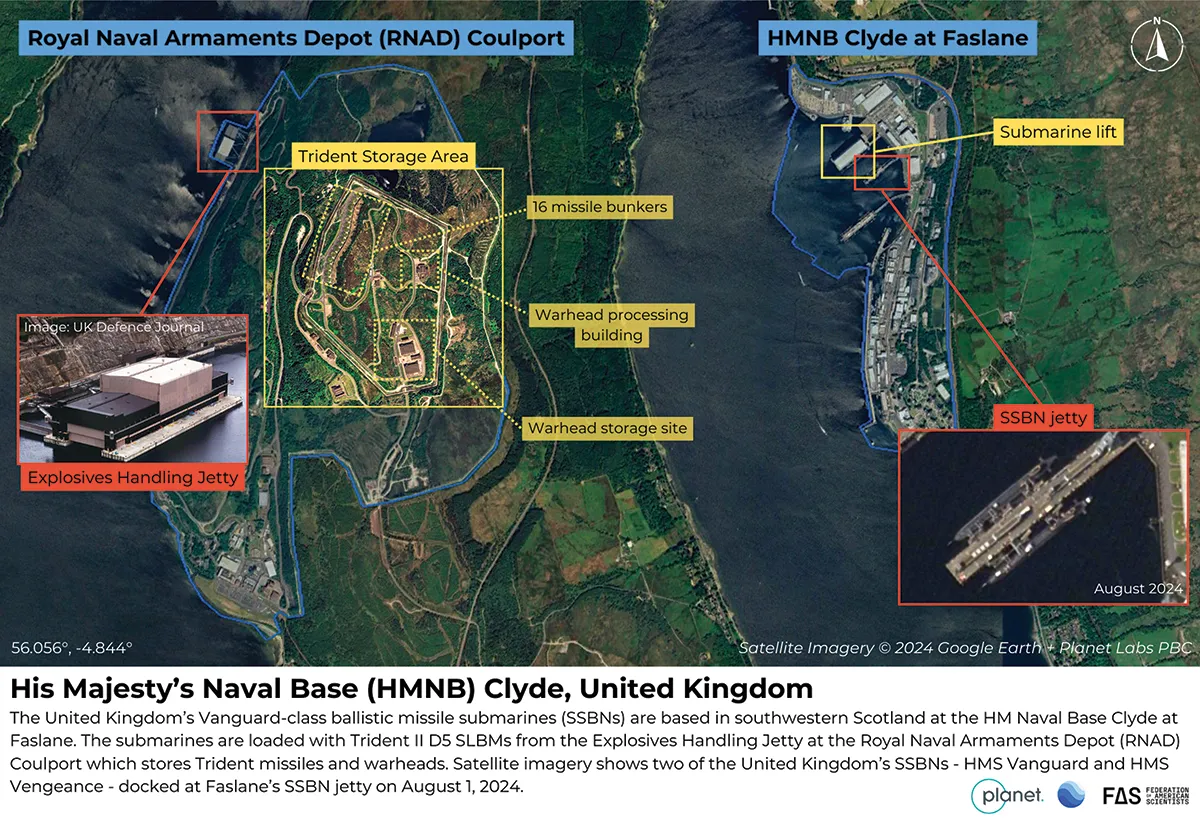
Non-operational warheads are stored at the Royal Naval Armaments Depot at Coulport, approximately three kilometers west of the base. The submarines undergo deep maintenance at Devonport Royal Dockyard in Plymouth (Figure 3).
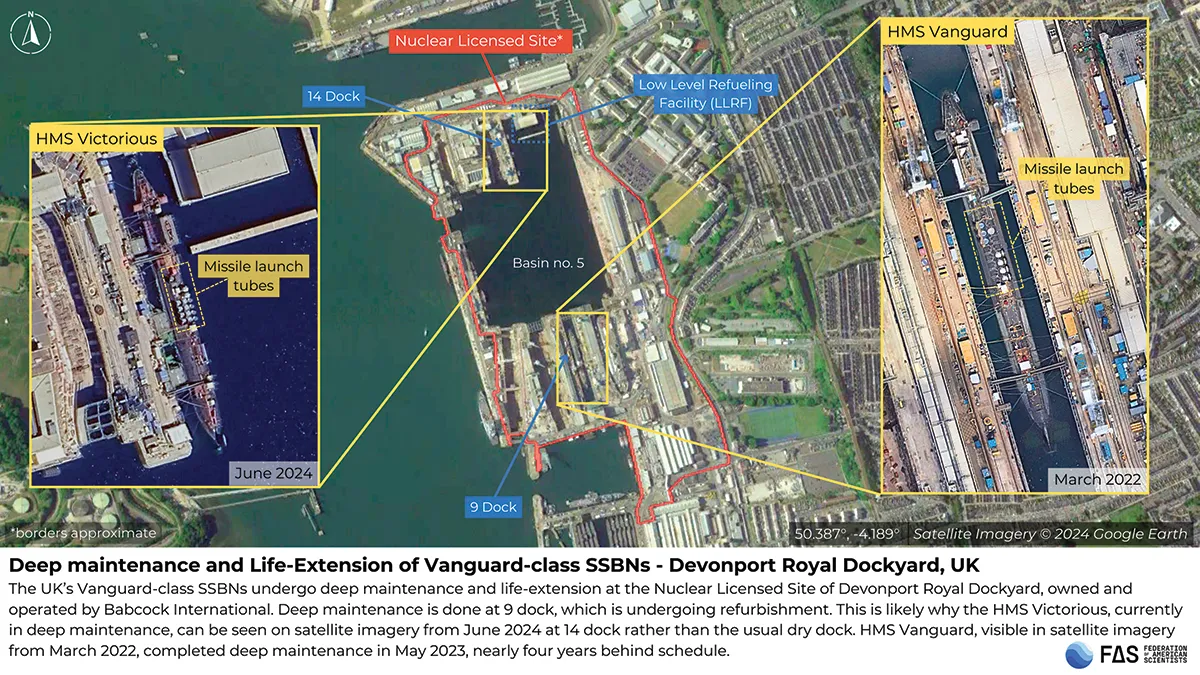
Replacement of submarines
Despite decades of nuclear weapons reductions, the United Kingdom—with broad parliamentary support—has committed to replacing its current fleet of Vanguard-class SSBNs with brand-new boats. The new Dreadnought-class SSBNs are expected to enter service in the early 2030s and have a service life of at least 30 years (Mills 2024c, 10). The four boats will be named Dreadnought, Valiant, Warspite, and King George VI (UK Ministry of Defence 2019).
The Dreadnought-class SSBNs will have new “Quad Pack” Common Missile Compartments that are being designed in cooperation with the US Navy to also equip the United States’ new Columbia-class SSBNs. Each “Quad Pack” Common Missile Compartment holds four launch tubes, and each Dreadnought-class SSBN will have three Quad Packs on board for a planned total of 12 launch tubes—a reduction from the 16 launch tubes currently carried by the Vanguard-class submarines. Technical problems and quality control issues resulted in the delayed delivery of the missile launch tubes for the Common Missile Compartment; however, the Ministry of Defence confirmed in a 2022 report that all twelve missile tubes for HMS Dreadnought had been delivered and integrated into the ship’s pressure hull (UK Ministry of Defence 2022).
The Dreadnought boats will be powered by a new Pressurized Water Reactor 3 (PWR3) being developed by Rolls Royce. According to the Royal Navy, the new propulsion system will provide simplified operations, a longer service life, and lower maintenance costs throughout the submarines’ service life (Royal Navy 2024).
According to BAE Systems, the primary contractor for the submarines, construction is well underway for the first two boats, HMS Dreadnought and HMS Valiant. Construction began for the third boat, HMS Warspite, in February 2023 (BAE Systems 2023). The Ministry of Defence announced in May 2022 over £2 billion ($2.6 billion) in contracts to begin the “delivery phase 3” of the Dreadnought program, a several-year phase during which HMS Dreadnought will eventually begin sea trials (BAE Systems 2022; Mills 2024c).
Sea-based missiles and nuclear warheads
The United Kingdom’s nuclear deterrent relies heavily on American nuclear infrastructure, so much so that it has long been in question whether it possesses a truly “independent deterrent.” The United Kingdom does not own its own missiles but has title to 58 US Trident SLBMs from a pool of missiles shared with the US Navy. The UK government is also participating in the US Navy’s current program to extend the service life of the Trident II D5 (the life-extended version will be known as D5LE) missile to the early 2060s (Mills 2021). The missile will reportedly undergo a review in 2025, after which it will begin ground testing. The first flight test is expected in 2032, followed by the start of early production (Street 2022). As part of its bilateral nuclear cooperation, US laboratories evaluate UK missile tests, and UK submarines conduct test fires of Trident missiles near Cape Canaveral in Florida under US supervision (Ritchie 2024, 25–26). Notably, the past two consecutive Trident SLBM test launches, in 2024 and 2016, both failed. Following the most recent test failure, the UK Ministry of Defence noted that an “anomaly” occurred that caused the first-stage booster to not ignite following its ejection from the missile’s canister (Shapps 2024). We were subsequently informed by UK officials that the anomaly was not related to the missile, but rather to the specific conditions on the day of the test.
Additionally, the current UK warhead, called Holbrook, is believed to be very similar to the United States’ W76-0 warhead—so similar that it has previously appeared in the US Department of Energy’s “W76 Needs” maintenance schedule (Kristensen 2006). In 2023, the United Kingdom completed the refurbishment of its warheads for incorporation onto the US-supplied Mk4A aeroshell as part of its Nuclear Warhead Capability Sustainment Programme (HM Government 2024a, 28). The Mk4A is an upgraded version of the Mk4 that includes an improved MC4700 arming, fuzing, and firing (AF&F) system. UK officials have suggested that “the Mk4A programme will not increase the destructive power of the warhead;” however, the new AF&F system reportedly includes a burst-height compensation mechanism that significantly increases the system’s ability to conduct hard-target kill missions (Kristensen, McKinzie, and Postol 2017; Norton-Taylor 2011; UK Ministry of Defence 2016).
These warhead upgrades took place at the AWE facility at Aldermaston (Figure 4), from where the new Mk4A warheads were transported on trucks north to the Royal Naval Armaments Depot at Coulport, near Glasgow, for loading onto the UK SSBN fleet. Warheads and components scheduled for dismantlement or recycling are transported to AWE Burghfield, eight kilometers northeast of Aldermaston (Figure 5).

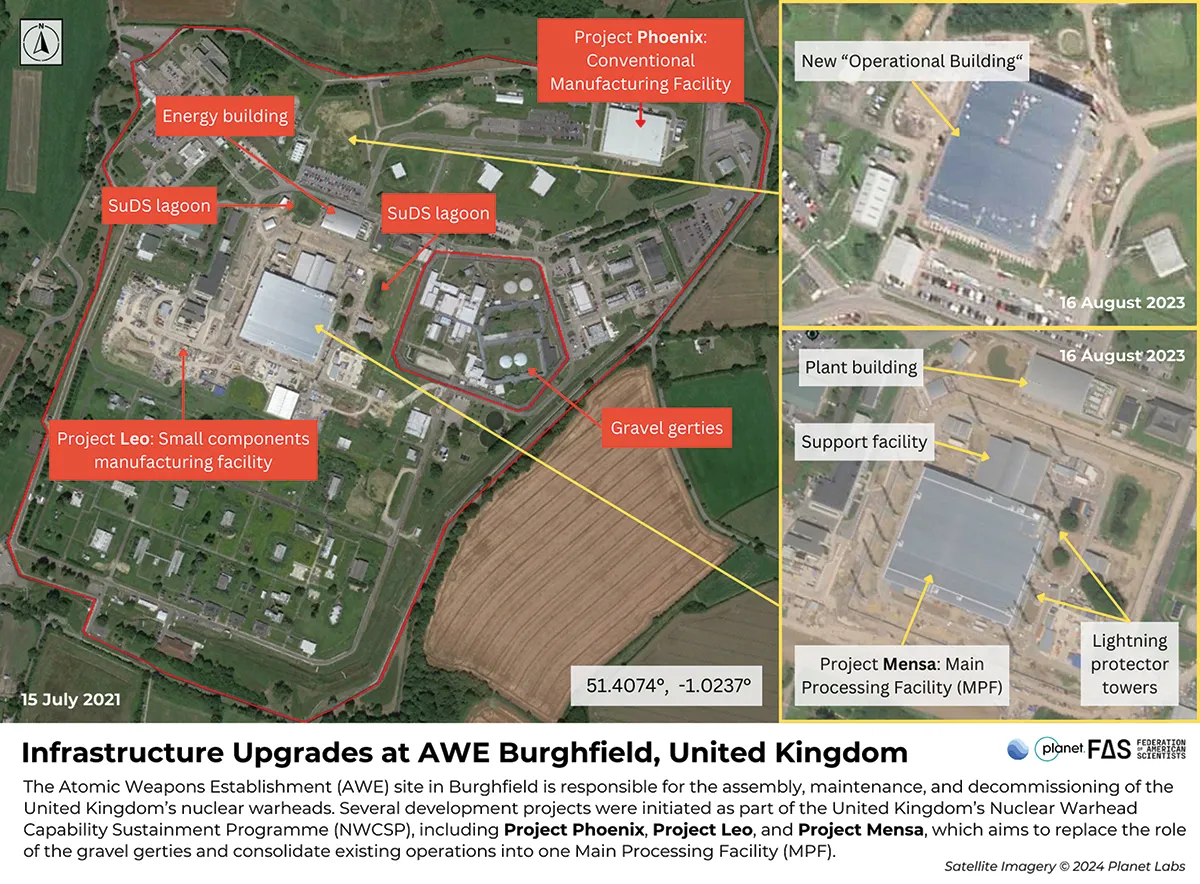
In February 2020, the UK Secretary of Defence announced the start of a new warhead program to eventually replace the current warhead (UK Ministry of Defence 2020). Like its predecessor, the new A21/Mk7 warhead is highly intertwined with the new US W93/Mk7 warhead program. Although the UK Government claims that “each nation is developing a sovereign design,” the UK Ministry of Defence acknowledged before the parliament, in 2020, that the UK A21/Mk7 “not exactly the same warhead but … there is a very close connection [with the US W93/Mk7] in design terms and production terms” (Lovegrove 2020). These close connections help explain the actions of the UK Secretary of Defence in April 2020 who lobbied US members of Congress in an unprecedented letter in support of the new US W93/Mk7 warhead, describing it as “critical … to the long-term viability of the United Kingdom’s nuclear deterrent” (Borger 2020). The A21/Mk7 program is currently in its concept phase, and transition to the new warhead is expected to begin in the late 2030s (Mills 2024b). The warhead’s name—Astraea—was revealed in the UK Government’s 2024 Defence Nuclear Enterprise report (HM Government 2024a, 32).
Another component of the United Kingdom’s Nuclear Warhead Capability Sustainment Programme is the slate of infrastructure projects at AWE facilities, including plans for a new “MENSA” nuclear warhead assembly and disassembly facility at AWE Burghfield and a new “Pegasus” enriched uranium storage and manufacturing facility at AWE Aldermaston. Both projects have faced significant cost and schedule issues. In addition, the UK government is in the early design phase of another infrastructure project, called Project AURORA, for a new plutonium manufacturing facility at AWE Aldermaston (Mills 2024b).
Nuclear transports
The US-UK Mutual Defence Agreement allows for the transfer of nuclear materials, research, training, technology, and more between the two countries. These exchanges are often carried out by British C-17 Globemaster transport aircraft that fly between Royal Air Force (RAF) Brize Norton and various air bases in the United States (Campaign for Nuclear Disarmament and Nukewatch 2024). Between 2011 and 2016, the UK Ministry of Defence reported that 23 flights carrying defense nuclear materials were undertaken, and between January 2021 and December 2023, they reported 13 flights (Heappey 2023; Mordaunt 2016). This suggests that an average of four to five flights carrying special nuclear materials take place each year. The UK Ministry of Defence has denied requests by Nukewatch to release information about the types and quantities of nuclear materials transported by the C-17s, citing the risk of “reducing the effectiveness of the nuclear deterrent” (Norton-Taylor 2024). However, it is likely that some of the materials transported by these aircraft include tritium, highly enriched uranium, plutonium, and warhead components for Trident missiles. Protected Ministry of Defence truck convoys also transport high-security cargo between RAF Brize Norton and UK military nuclear sites like AWE Aldermaston and AWE Burghfield (Nukewatch 2020, 2021).
Concerns and issues for the future
Increasing costs and poor management
One particularly longstanding challenge for the United Kingdom’s nuclear deterrent is the increasing cost and deficient management of the program. In 2023, the UK Ministry of Defence reported that the anticipated costs for supporting the nuclear deterrent would exceed the budget by £7.9 billion ($10.4 billion) over the next ten years, which is a £5 billion ($6.6 billion) increase from the 2018 cost overrun estimate (National Audit Office 2023, 2018). Overall, Defence Nuclear Organisation costs have increased to £99.5 billion ($130.6 billion), up 62 percent from the previous year’s “Equipment Plan” (National Audit Office 2023, 17). The UK Navy also reported that its projected costs have risen by 41 percent and that there is a deficit of £15.3 billion ($20 billion) in this year’s Plan, compared with the surplus of £700 million ($920 million) in 2022 (8). These nuclear expenditures have been identified as “scrutiny gaps” by the UK parliament (Committee of Public Accounts 2024, 5).
In particular, costs of the Dreadnought SSBN program have risen substantially. Following its “initial gate” cost estimate of £25 billion ($32.8 billion) in 2011, the costs of building the four new submarines rose to £31 billion ($40.7 billion) in 2015 (HM Government 2015, 36; 2011, 10). The UK Government also set aside a contingency fund of £10 billion to cover possible cost overruns. In August 2024, the House of Commons Library reported that as of March 2023, approximately £14.7 billion ($19.3 billion) had been spent on the “concept, assessment, and early delivery phases” of the submarine program and £2 billion ($2.6 billion) of the contingency funds had been accessed (Mills 2024c).
In addition to these compounding cost concerns, in 2020, the National Audit Office and the parliamentary Public Accounts Committee published two reports indicating that three crucial nuclear infrastructure projects would be delayed of at least a year and a half and up to over six years, with costs increasing by over £1.3 billion ($1.7 billion) due to deficient management (Committee of Public Accounts 2020; National Audit Office 2020). One of these infrastructure projects, MENSA—a new warhead assembly and disassembly facility at AWE Burghfield—has now been delayed by seven years with an expected cost of £2.2 billion ($2.9 billion) instead of its original budget of £800 million ($1 billion) (Mills 2024b, 3; Nuclear Information Service 2023d). Another critical nuclear project, called PEGASUS, for a new enriched uranium storage and manufacturing facility at the AWE site in Aldermaston, has been plagued by similar issues. The approved cost was originally £634 million ($832 million), but has now skyrocketed to £1.7 billion ($2.2 billion) (Mills 2024b; Plant 2020). After a six-year delay, construction on the storage facility has begun and the manufacturing facility is scheduled to be completed by 2030.
In the 2022–2023 edition of their annual report, the UK’s Infrastructure and Projects Authority labeled projects according to the likelihood of project aims being achieved on time and on budget. Several key defense programs—including the Submarine Dismantling Project, the AURORA plutonium manufacturing facility, and the PEGASUS enriched uranium storage and manufacturing facility—were labeled “amber,” signifying that there are significant programmatic issues that require management attention (Infrastructure and Projects Authority 2023, 69, 73). The core production capability for the submarine reactors, however, was labeled “red” for the second year in a row, signifying that “successful delivery of the project appears to be unachievable” (69). The National Audit Office reported that some of these delays are due to supply chain shortages and skilled workforce availability (National Audit Office 2023, 33).
In November 2020, in a bid to resolve some of these management and oversight issues, the Ministry of Defence announced a renationalization of the Atomic Weapons Establishment, which had previously been government-owned but contractor-operated via a consortium led by Lockheed Martin (Wallace 2020). Given the continued apparent setbacks, however, it remains unclear at this stage whether this new management structure will be more efficient going forward.
Potential future basing challenges
Another potential—yet highly significant—challenge for the United Kingdom’s nuclear deterrent lies with the prospect of Scottish independence from the United Kingdom. Naval Base Clyde, where the United Kingdom’s SSBNs are ported, is located at Faslane on the Gare Loch in Scotland. A 2013 Scottish government white paper clearly stated that if Scotland voted for independence the following year, the government “would make early agreement [with the United Kingdom] on the speediest safe removal of nuclear weapons a priority. This would be with a view to the removal of Trident within the first term of the Scottish Parliament following independence” (Scottish Government 2013, 14). Even though Scotland narrowly voted to remain part of the United Kingdom in 2014 and failed to win a majority of seats at the 2024 general election that may have called for another referendum, it is likely that this issue will continue to be a source of contention, especially following the United Kingdom’s decision to exit the European Union—a decision opposed by the majority of the Scottish population. Although several potential relocation candidates have been identified by external analysts—such as HM Naval Base Devonport in Plymouth—the costs and logistics involved with relocating the United Kingdom’s SSBN force would be prohibitive and could prompt the UK Government to reconsider its current plans to modernize its nuclear deterrent (Chalmers and Chalmers 2014; Norton-Taylor 2013).
The ageing Vanguard-class SSBNs
Each boat in the Vanguard fleet has surpassed its originally planned service life of 25 years. In recent years, the age of the fleet has resulted in “serious reliability problems” that could ultimately hinder the United Kingdom’s ability to maintain its “continuous at-sea deterrent” posture (Nuclear Information Service 2023a). In November 2023, for example, a faulty depth gauge incorrectly indicated to a Vanguard-class SSBN crew that the boat was level when it was, in fact, diving toward “crush depth,” narrowly averting an accident (Beale 2023).
The “deep maintenance period” (a comprehensive life-extension initiative) for HMS Vanguard, which is the oldest boat in the fleet, took nearly four years longer than planned and required an unscheduled refueling of the vessel’s nuclear reactor. The increased maintenance time caused a delay in the start of deep maintenance for the fleet’s second boat, HMS Victorious (Nuclear Information Service 2023c).
These delays caused increased patrol lengths for the submarines well beyond the typical three months. The HMS Vigilant conducted a 195-day patrol from February 2023 to September 2023, and most recently the HMS Vengeance returned to Faslane in March 2024 after a 201-day patrol—the second-longest on record after a 207-day patrol by HMS Victorious in 2021 (Nuclear Information Service 2023b, 2024a). In addition to the considerable negative impact on crew members, the lengthy patrols will likely increase the maintenance required before each submarine can return to sea, further exacerbating the problem (Forsyth 2022).
Any delays in the Dreadnought-class submarine program will push the Vanguard submarines even further beyond their original 25-year service life. With the entry into service of the Dreadnought submarines not expected until the early 2030s, the Vanguard vessels will reach a service life of 37 years or more (Nuclear Information Service 2023a). If maintenance and availability issues persist, the United Kingdom could struggle to maintain its continuous at-sea deterrent.
Return of US Air Force nuclear mission to RAF Lakenheath
Even though they are not part of the UK nuclear arsenal, the status of US nuclear weapons in the United Kingdom is changing in response to the increased tension with Russia. The United Kingdom does not have nuclear bombs for delivery by aircraft; all such weapons were dismantled in the 1990s. But the United States continued to deploy nuclear weapons at RAF Lakenheath, located in southeast England, until the mid-2000s. By the early 2000s, the base had 110 B61 gravity bombs that were stored in 33 Weapons Storage and Security Systems (WS3) vaults and earmarked for delivery by US Air Force F-15E aircraft of the 48th Fighter Wing (Kristensen 2022). The United States withdrew the last of these weapons from RAF Lakenheath prior to 2008, marking the first time since 1945 that there were no US nuclear weapons in the United Kingdom (Kristensen 2008b). Ever since, the WS3 vaults—which have a maximum capacity of 132 bombs—have been in caretaker status (Korda and Kristensen 2023; Kristensen 2022).
In its FY 2023 NATO Security Investment Program budget, the US Department of Defense included the United Kingdom in its list of NATO countries receiving funds for upgrades to “special storage” sites—an unusual and recent addition to previous lists that included Belgium, Germany, Italy, the Netherlands, and Turkey (Kristensen 2022). Although a specific base was not named, the US Air Force FY 2024 budgetary justification package—submitted to Congress in March 2023—mentioned plans for the construction of a “surety dormitory” at RAF Lakenheath (Korda and Kristensen 2023). (The term “surety” is commonly used by the US Department of Defense and Department of Energy to refer to the safety and security of nuclear weapons.) According to the justification documents, the construction of this dormitory was an added requirement due to the increased number of US airmen at the base “as the result of the potential Surety Mission” (Department of the Air Force 2023, 254). All mentions of the United Kingdom—as well as other NATO countries where US nuclear weapons are forward-deployed—were removed in the FY 2024 version of the NATO Security Investment Program, likely due to our continued reporting (Korda and Kristensen 2023).
Meanwhile, the 495th Fighter Squadron of the 48th Fighter Wing at RAF Lakenheath became the first squadron in Europe equipped with the new nuclear-capable F-35A Lightning II (Korda and Kristensen 2023). The F-35A Lightning II was certified in March 2024 to carry the new B61–12 gravity bomb, which is replacing the approximately 100 legacy B61 gravity bombs forward-deployed in NATO host countries (Department of Defense Office of Inspector General 2024).
The upgrade at RAF Lakenheath is likely intended for improving operational flexibility, and not for permanent peacetime weapons deployment in the near future. Without increasing the number of deployed nuclear weapons, upgrading RAF Lakenheath to an active site could allow the base to receive nuclear weapons from other locations in Europe in a contingency. This assessment is supported by a statement by NATO Secretary General Jens Stoltenberg who declared in 2021, “we have no plans of stationing any nuclear weapons in any other countries than we already have these nuclear weapons as part of our deterrence and that … have been there for many, many years” (NATO 2021). Jessica Cox, then head of NATO’s Nuclear Policy Directorate, said in 2023 that there was no need to change where NATO’s nuclear weapons are deployed (Kervinen 2023). Although initially equipped with 33 weapons storage vaults, satellite images indicate that only 22 of the vaults at RAF Lakenheath are being reactivated (Kristensen 2024).
Finally, although US nuclear ballistic missile submarines are not permanently based in the United Kingdom, they have resumed occasional visits to UK ports. This began in 2015, in response to Russia’s invasion of Ukraine and annexation of Crimea, when the Ohio-class USS Wyoming (SSBN-742) docked in Faslane in Scotland. Since then, six SSBN port visits have taken place to Faslane and Gibraltar as well as one to Diego Garcia, a United Kingdom’s Indian Ocean territory in the Chagos Islands.
This research was carried out with grants from the Carnegie Corporation of New York, the Joseph Rowntree Charitable Trust, the Jubitz Foundation, the New-Land Foundation, Ploughshares, the Prospect Hill Foundation, and individual donors.
Together, we make the world safer.
The Bulletin elevates expert voices above the noise. But as an independent nonprofit organization, our operations depend on the support of readers like you. Help us continue to deliver quality journalism that holds leaders accountable. Your support of our work at any level is important. In return, we promise our coverage will be understandable, influential, vigilant, solution-oriented, and fair-minded. Together we can make a difference.
Keywords: SLBM, United Kingdom, ballistic missiles, nuclear weapons, submarines
Topics: Nuclear Notebook, Nuclear Weapons






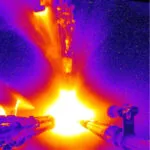
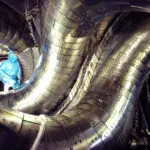
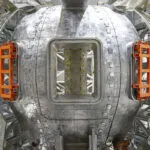

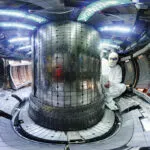
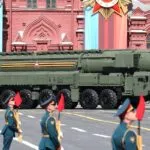
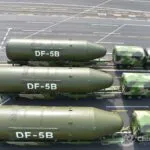
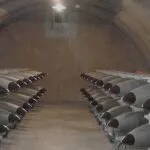



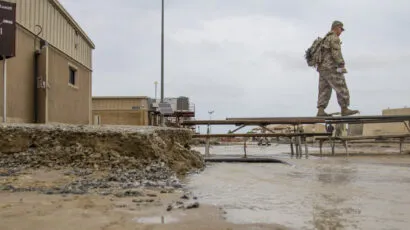



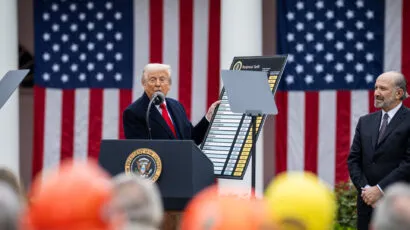

Okay, sheer insanity dressed up to look reasonable and acceptable. Billions upon billions upon billions for weapons not intended for actual use, (thank goodness!). Sex, drugs and porn at the top levels onboard these submarines. Why do we accept this as ‘normal’ or a good use of public funds? If governments spent that much money building global trust and collective mutual support, this facade of security would not be needed at all. And don’t forget, it is only a facade. Weapons greatly decrease global security, contribute to fear, and are an addiction of many military and governmental personnel. We need… Read more »
Being reminded of the stark reality of the UK’s “counter-value” targeting rationale brings it home. “Doomsday” (i.e. default nuclear targeting of high-density population areas) is the tacit, prevailing doctrine of all nuclear weapons states because they simply cannot protect themselves from incoming SLBM’s and ICBM’s. Most people I ask about it have drunk the nuclear posture cool-aid; they believe the widely spread mis-info that anti-missile defenses can stop incoming warheads.